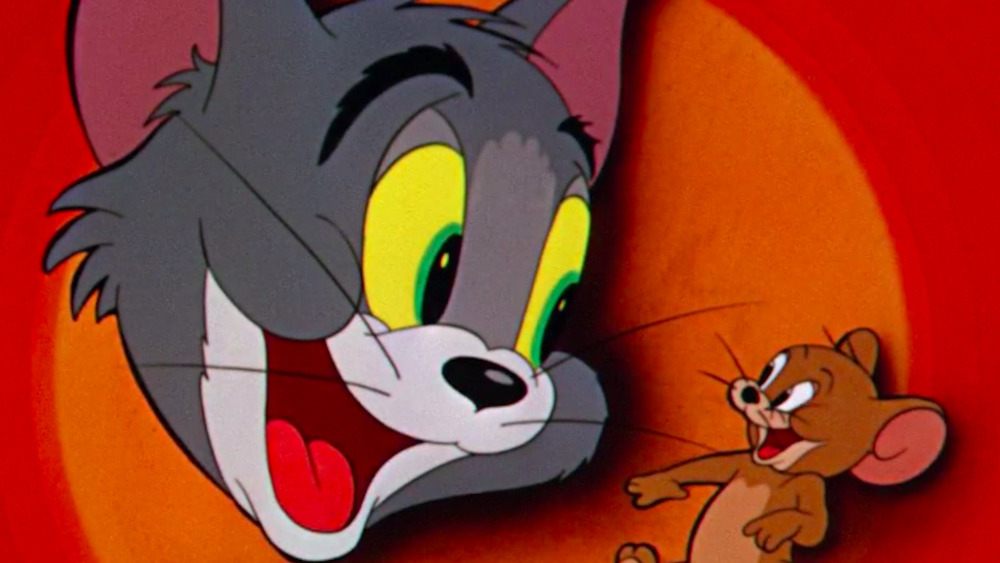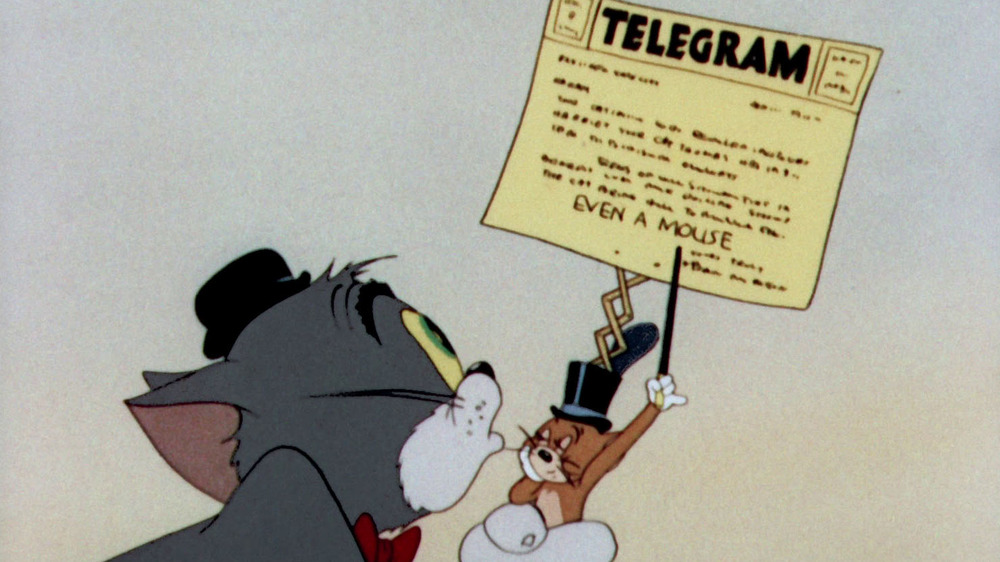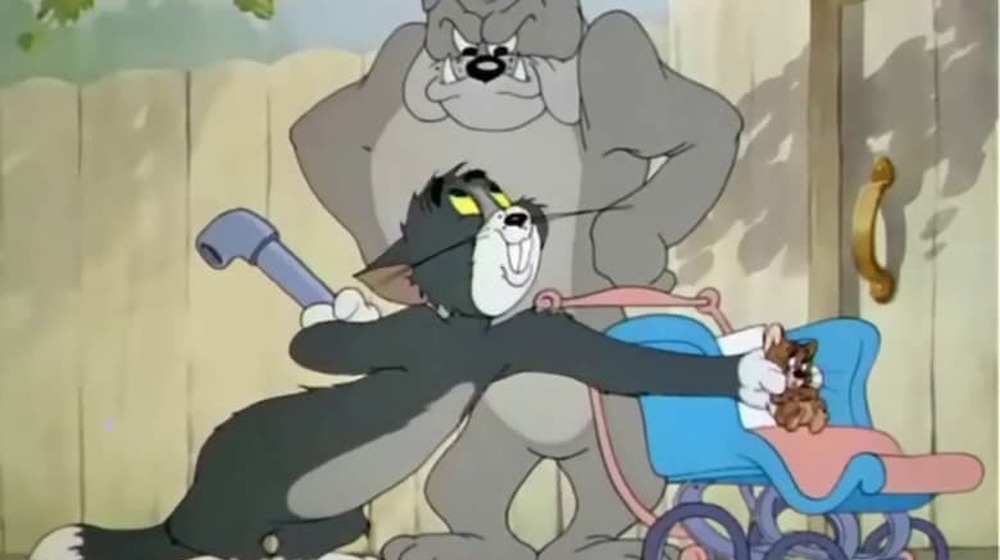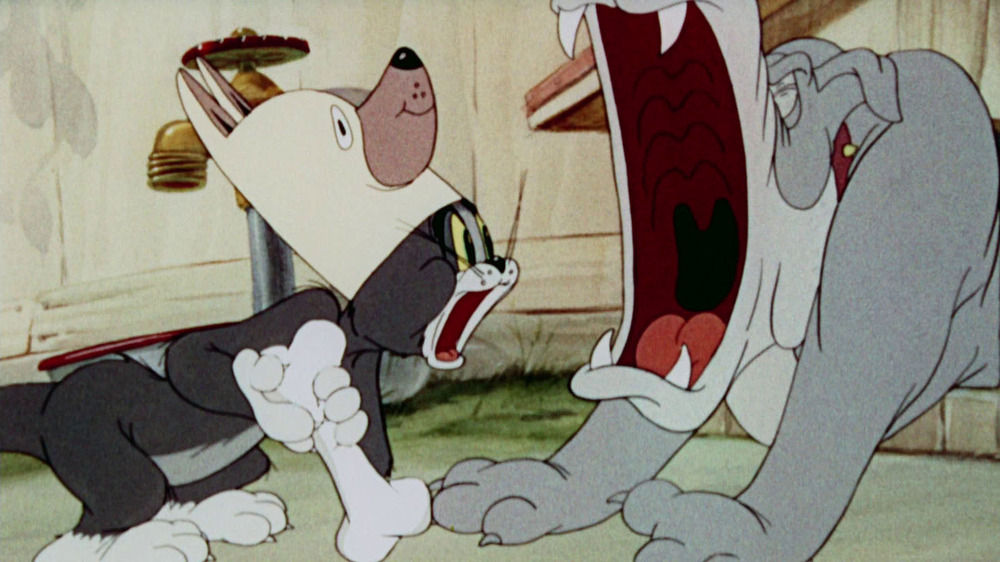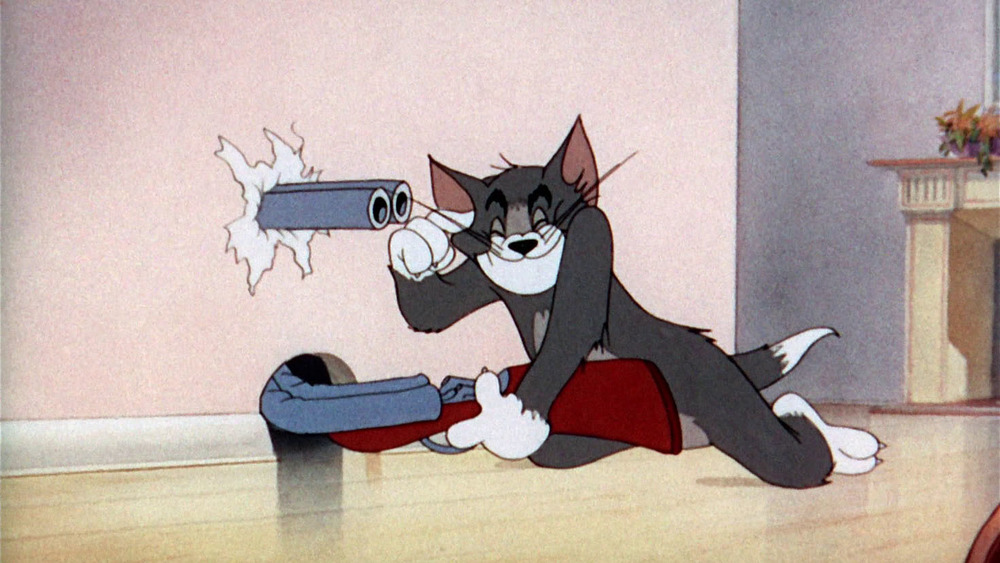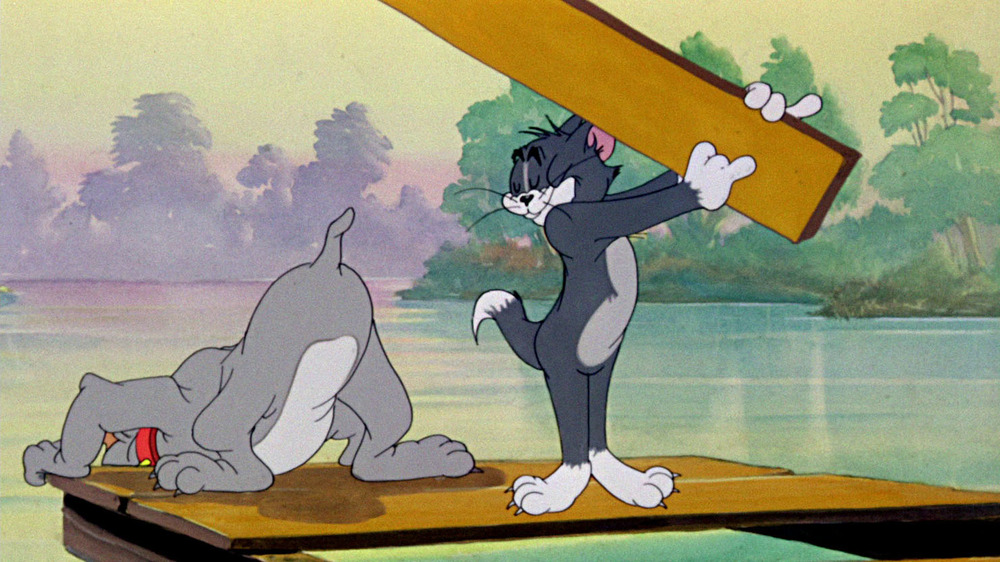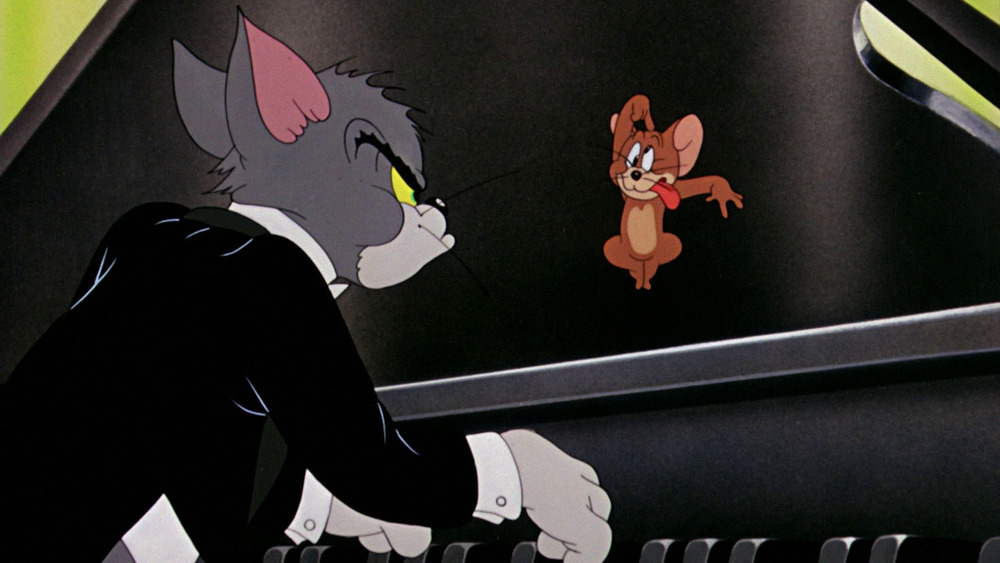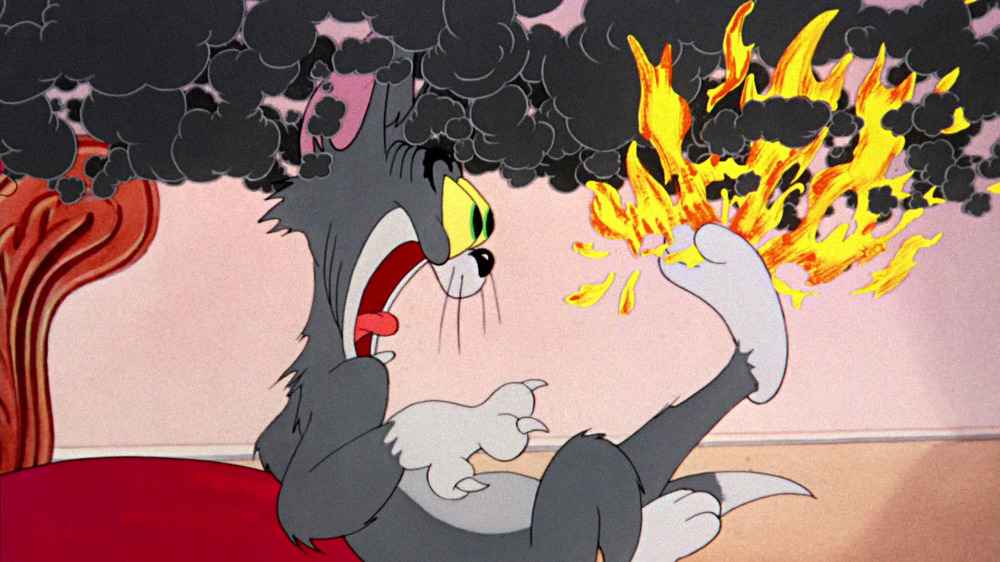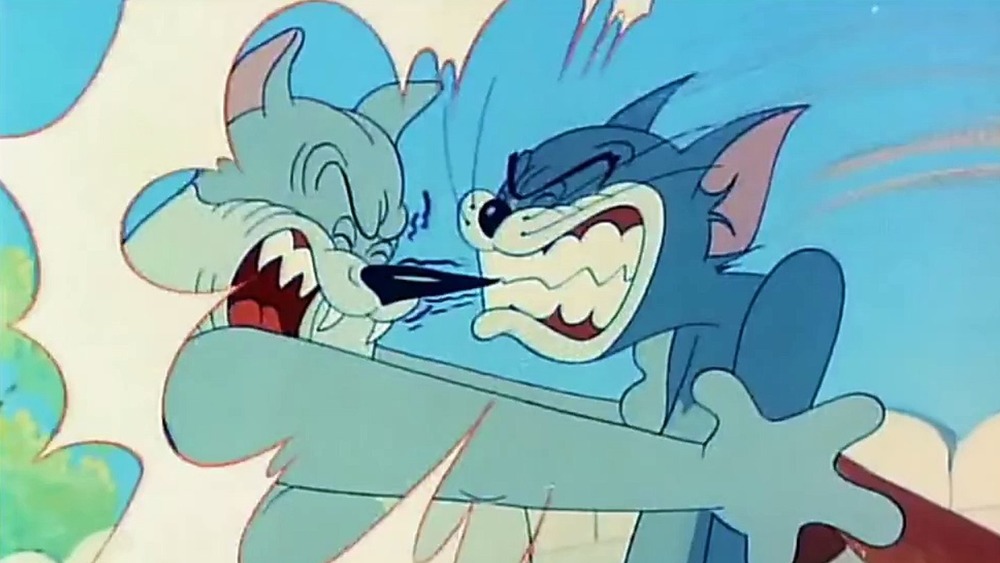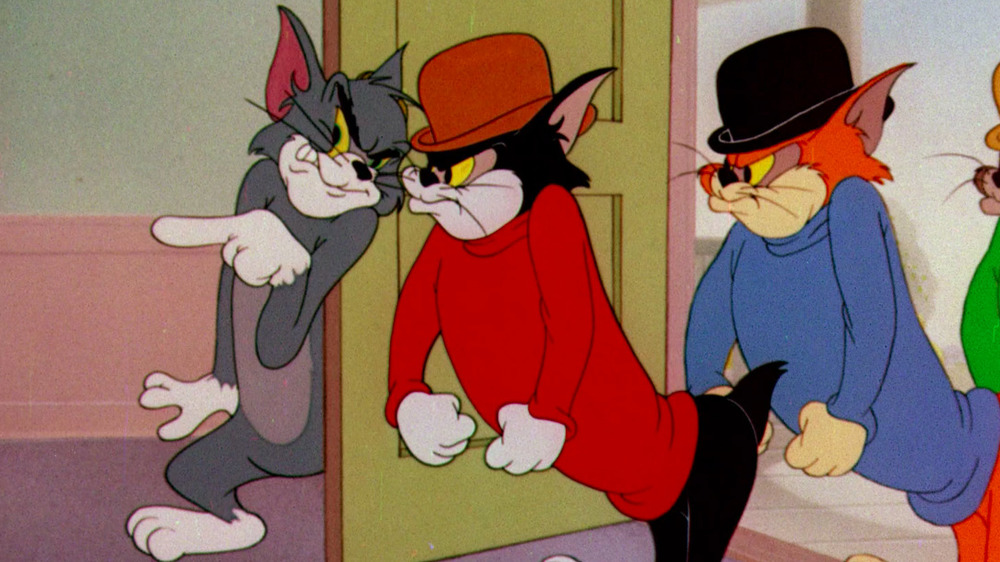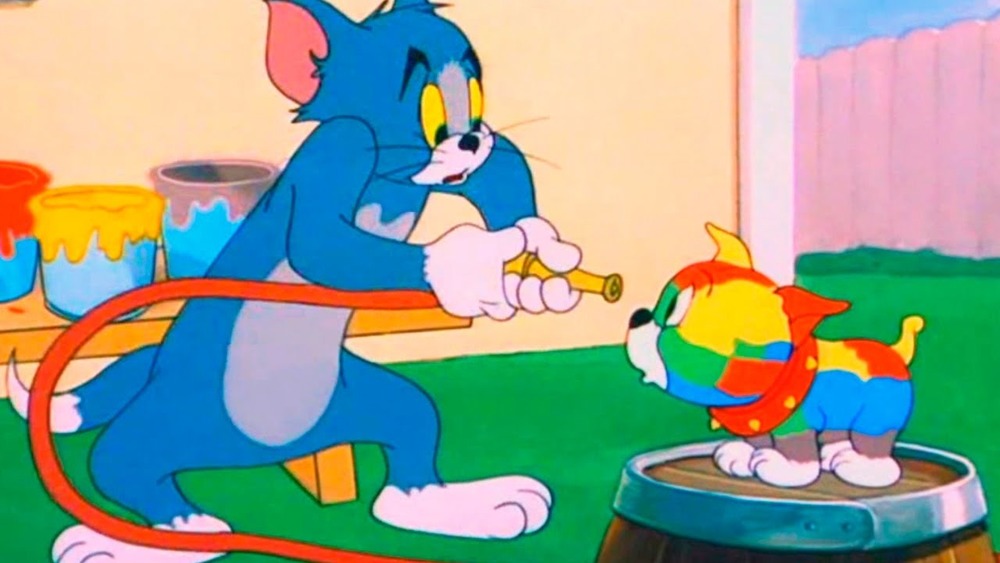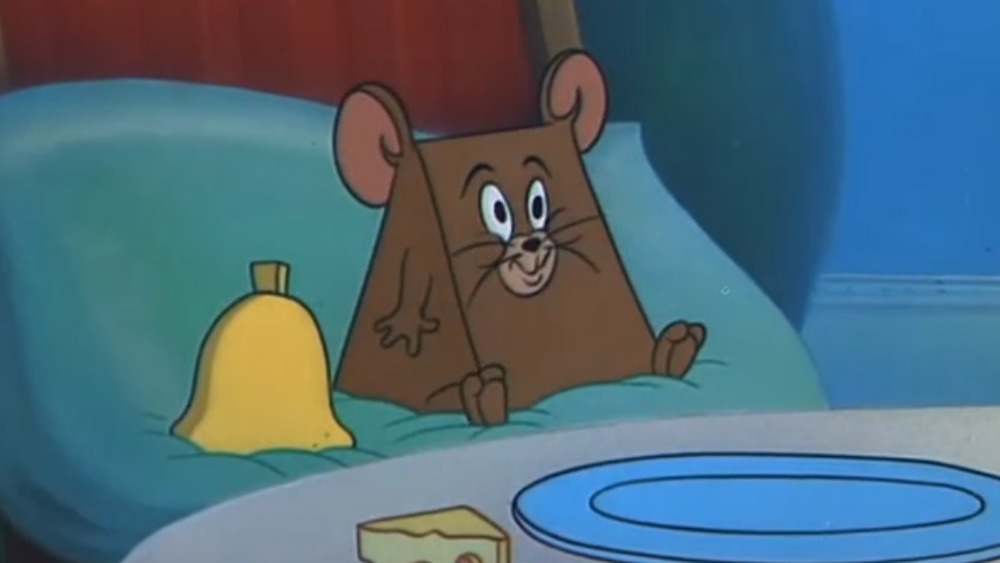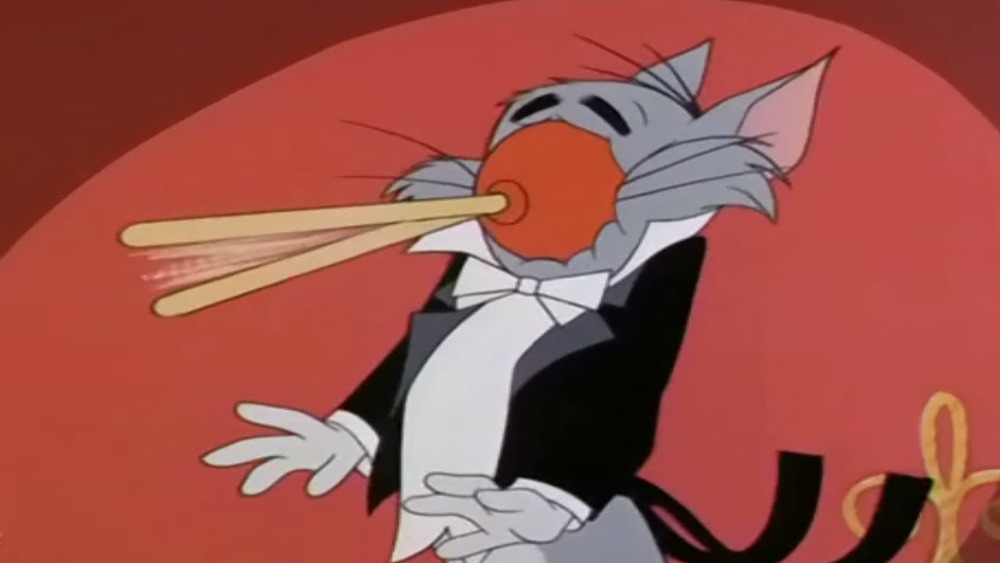The Best Tom And Jerry Cartoons To Stream Right Now
If you click a link and buy a product or service from a merchant, we may be paid an affiliate commission.
If you want the funniest classic cartoons, you go to Warner Brothers. If you want the best animation, you go to Disney. But if you want both at once, you go to MGM, the creators of the classic Tom and Jerry cartoons. Throughout the '40s and '50s, the most lavish studio in Old Hollywood spared no expense in bringing the adventures of the little mouse and the cat who chases him to gorgeously detailed but hilariously exaggerated life.
More than that, the imagination and razor-sharp comedy of those classic shorts has kept Tom and Jerry alive in the cultural consciousness for over 80 years, all the way up through the new Tom and Jerry movie starring Michael Peña and Chloë Grace Moretz. And the cartoons themselves are still preserved on HBO Max, where nearly a hundred of them are at subscribers' fingertips. It can be hard to know where to start with such a huge catalog, but we've taken the time to select the best ones for you to stream right now.
The Million Dollar Cat gives Jerry the upper hand
Just four years after Tom and Jerry first appeared, creators Will Hanna and Joe Barbera were already shaking up the formula. The Million Dollar Cat opens with Tom and Jerry up to their usual routine when they're interrupted by a knock at the door. It's a telegram saying an eccentric aunt has left $1 million to Tom. Tom starts cheering and doing cartwheels across the floor, but when Jerry reads the telegram, Tom's surprised to see him do the same. It turns out Tom hadn't finished reading. His entire fortune is forfeit if he harms any living creature ... "even a mouse."
So Tom gets to enjoy all the benefits of his newfound wealth but has to endure all kinds of torture from Jerry, who exploits the conditions of the will all he can. There's an especially funny running gag where Jerry finds creative ways to remind Tom of his obligations like taping the telegram to the blinds and making it spring out of his hat. Granted, the cartoon series hasn't quite settled into its classic form yet — the characters' ears and eyes are smaller, Tom's whiskers are slicked together, and he actually talks (with a different voice each time, no less). But Tom's already caught on to his and Jerry's arrangement. In a gag too hilarious to spoil, after tricking Jerry into jumping out the window, Tom knows to check if the mouse has somehow come back, but he doesn't necessarily look in the right place.
The Bodyguard is punishing for Tom and hilarious for us
There are only so many stories you can tell with just two characters, so Tom and Jerry added other players to the mix over the years, most frequently Spike the Bulldog. Made before Spike's voice was set as Daws Butler's Jimmy Durante impression, The Bodyguard features the iconic booming growl of Billy Bletcher, who you may recognize as Mickey Mouse's nemesis Pete, the wolf from The Three Little Pigs, and hundreds of other cartoon classics.
The beautifully detailed animation of the early Tom and Jerry cartoons also makes a big difference here. Spike's jowls and ears bob up and down as he walks, and you can see all his wrinkles and all Tom's hairs in three-dimensional detail. There's one especially well-done scene where Jerry blows a giant gum bubble that creases where it hits the ground, and there's another where Tom gets some candy by smashing a gumball machine that bends like a balloon.
As for the plot, it sees Jerry rescue Spike from the dogcatcher, and the grateful canine promises to help Jerry whenever he whistles, which is bad news for Tom. In one hysterical scene, Tom hears Jerry whistle and decides to get all the fuss out of the way ahead of time by digging his own grave, complete with flowers and headstone, before lying down in it!
Puttin' on the Dog is an animation showcase
In Puttin' on the Dog, Tom makes the mistake of chasing Jerry into the dog pound, where he's immediately tackled by a whole pack of pooches. But he soon finds a way to get back in by stealing the head off a dog statue in front of the pet store across the street and using it as a mask. If only it didn't keep coming off at the least convenient times, usually with a little help from Jerry.
The dog head is apparently made of some kind of ceramic, but the animators have a ball making it squash and stretch like rubber as Tom frantically tries to squeeze it back on before the dogs see him. And the setting gives them plenty of colorful new characters to play with, including one scene where Tom follows Jerry into the long fur of a sheepdog, and the animators seems to have actually figured out what hair would look like if you could swim in it like water. In another scene, Tom discovers Jerry in a barrel, and the whole thing swells like a balloon — somehow without ever looking less like solid wood — before it explodes, sending dozens of splinters in every direction.
Best of all is when Spike finally realizes that, as Jerry's note informs him, "Yes, stupid, he's a cat." The bulldog stretches his whole mouth open in a lion roar, and his whole body follows it into midair, his jowls shaking in the wind.
Mouse Trouble is the funniest the Tom and Jerry series gets
Not every Tom and Jerry cartoon needs a clever twist or running plotline to be great. Sometimes it just needs to just string one great gag after another, and none of them are quite as amazing as the ones in Mouse Trouble. This classic cartoon is almost Road Runner-like in its simplicity, winding up Tom with a book titled How to Catch a Mouse ("A Random Mouse Book") and letting Jerry turn every trick he uses right back on him. While most cartoons have Tom rapidly heal himself, Wolverine-style, between cuts, this one creates an extra hilarious through line by showing the results of his many injuries, with Tom donning a ridiculous red wig after accidentally blowing his own scalp off and emerging covered in bandages after he hides in a box and Jerry sticks it full of pins.
Some gags play with our expectations, like showing Jerry wrestle endlessly with a mousetrap that somehow never snaps shut. Others leave the action to our imaginations, presumably because it would be banned in every country if the violence appeared onscreen, like when Tom reads that "a cornered mouse will never fight" and comes back much worse for wear to tell us, "Don't you believe it!" No wonder Mouse Trouble won the series its second Oscar.
Cat Fishin' is a feast for the eyes and the funny bone
One of the most remarkable things about these classic MGM cartoons is how much care Will Hanna and Joe Barbera take with details that most animators ignore entirely. The riverside short Cat Fishin' is one of the best examples.
This one's a four-hander, with Tom using Jerry as bait for his early-morning fishing, meaning Jerry has to fight off both Tom and a hungry, toothy pike. Meanwhile, Tom has to evade Spike, the guard dog for the fenced-off fishing hole. And the animation here is absolutely incredible. There are painstaking details in every water droplet that follows Tom and Jerry splashing around, and the animators make the grass froth up like a river as Tom accidentally drags the sleeping Spike along on his fishing line. It's similarly artful with the unmoving backgrounds, painted in eye-popping watercolors that would sadly go out of style just a few years later.
But a cartoon like this could be painted by Rembrandt himself, and it still wouldn't matter if it wasn't funny. Fortunately, all that attention to detail serves the comedy beautifully, from the splatter of the lemon juice Jerry spits in a hungry fish's face to the incongruously dainty way Tom tees up a plank to batter Spike, pinky out, to his self-satisfied grin as he kicks the dog off the dock.
The Cat Concerto is an Oscar-winning Tom and Jerry classic
Tom and Jerry won their fourth Oscar for what might be their most beloved short, The Cat Concerto. This one takes the duo far away from their own backyard and dresses Tom up in people clothes as a concert pianist trying to play Franz Liszt's "Hungarian Rhapsody No. 2," all despite piano-dwelling Jerry's best efforts. MGM's character animation is at its best here, with Tom's unprovoked spitefulness and Jerry's infectious joy making it easy to decide who to root for. And The Cat Concerto is so perfectly integrated with Liszt's music that it's like a duet from beyond the grave with Hanna and Barbera or a dance with drawings.
The same year MGM released Concerto, Warner Brothers released Rhapsody Rabbit, an equally hysterical and near-identical short where Bugs Bunny also tries to play "Hungarian Rhapsody No. 2" while tangling with a piano-dwelling mouse. It's hard to know who ripped off who, but strange as it seems, the amount of time it takes to produce a cartoon means it was probably neither, unless someone was trading notes behind the scenes. But the fact that both cartoons approached the same plot without either one using the same gags says a lot about the creativity of both studios. And if you want a metaphor for the difference between MGM and the more budget-conscious Warner Bros., look no further than Tom performing with a full orchestra while Bugs sits all alone at his piano.
The Invisible Mouse has fun with your expectations
MGM's attention to animating not just their characters but their surroundings pays off wonderfully in The Invisible Mouse, where the scenery has to stand in for the character. In this cartoon, Jerry runs from Tom right into a bottle of invisible ink which, with classic cartoon logic, makes him vanish. Will Hanna and Joe Barbera mine every possibility out of this plot, and even though we can't see Jerry, we never lose track of him thanks to the ingenious animation that follows food disappearing down his invisible gullet, pillows creasing where he lands, and his shape reappearing as he runs under the curtains.
As much as any of these shorts, The Invisible Mouse knows the power of anticipation, slowly keying us up as Jerry's antics build to the inevitable, bone-crunching punchline. And they have no small help in that department, thanks to the hilariously inappropriate and jaunty little tune that composer Scott Bradley uses to build up to Jerry's next act of carnage. Sometimes Hanna and Barbera turn our expectations against us by going even farther than we'd expect, like when Jerry lights a match between Tom's toes before changing his mind and lighting up the whole matchbook. And then there's the scene when Jerry cues up a golf club above Spike's head and sends him crashing all the way into the basement.
Love That Pup introduced an adorable supporting player
Love That Pup introduces a softer side to Spike by introducing his son, Tyke. If anything, though, that only makes him more dangerous, since, like most parents, he'll fight to the death to protect his little boy — something Jerry takes full advantage of. And the addition of Tyke fleshed out Spike's personality, making him distinct from Tweety and Sylvester's Hector, Pluto's Butch, and the dozens of other big, mean bulldogs populating cartoon screens at the time.
Love That Pup starts strong right out of the gate, with Tom and Jerry bursting through the front door and into the yard, leaving fragments flying everywhere. There's also a scene of Tom falling into a trap he set for Jerry that beat The Simpsons to their famous "rake gag" by 40 years. Even if this version doesn't have the benefit of going on as long as its predecessor, the expressively animated starbursts that accompany every impact make it hilarious in its own right. And while a lot of cartoons stop being funny when they get cute, Love That Pup keeps Tyke from being a Scrappy-Doo-style embarrassment by sticking a hysterically confused look on his face that serves the comedy while also being cute as all heck.
Jerry's Cousin is a meme-able masterpiece
Jerry's Cousin introduces a new character to the Tom and Jerry universe with the eponymous Muscles Mouse, who we know is a fearsome presence even before we see him due to the unconscious alley cats scattered around his mousehole. The incongruity of a tough-talking, 1940s gangster-type who looks just like cute little Jerry Mouse is funny enough, but the cartoon doesn't stop there. Instead, we're treated with Tom's increasingly desperate attempts to get rid of Jerry's new protector.
There's another great callback to Tom's past injuries here when Muscles blows two shotguns shells into Tom's eyeballs. When we next see the wounded cat, it's a frequently memed scene where he's sporting green-tinted ladies' glasses to cover up his injuries. As we've seen, Will Hanna and Joe Barbera weren't shy about animating their cartoon carnage in great detail, but they also knew less is more sometimes, and there are some great fight scenes that are all the funnier for taking place off-screen ... well, except for a few pieces of flying furniture.
Slicked-up Pup is a Tom and Jerry cartoon that does a lot with a little
In Slicked-up Pup, Spike and Tyke return, this time with Tom and Jerry interrupting Tyke's bath. This means Tom knocks Tyke smack into the middle of a mud puddle, and Spike is so mad that he threatens to tear Tom "limb from limb" if he gets Tyke dirty again. It's a simple setup, but Will Hanna and Joe Barbera find every variation on it they can over the course of the next five minutes, threatening Tyke with tomatoes, ink, paint, and tar, which Tom and Jerry's owners somehow have lying around in the yard.
And Tom's reactions every time Tyke gets soiled are just as funny, with Hanna himself providing a variety of screams, including one full-throated "AAAH!" that's music to every cartoon lover's ears. And the animators find new ways to visualize Tom's shrieks, with duplicate eyeballs popping out of his head or having Tom twist himself up in knots. Daws Butler is at his best as Spike, too, and it never gets any less funny to hear him say, "That's my boy you got there," no matter how many times he does.
Fit to Be Tied is one of the series' last great moments
In Fit to Be Tied, Jerry pulls a tack out of Spike's paw, and Spike thanks him by giving the mouse a bell and promising to come whenever he rings it. So far, this may sound like a repeat of The Bodyguard (or the even funnier standalone MGM short Bad Luck Blackie, also streaming on HBO). But this one keeps going where that one ended and continues pulling out new twists every minute or two. Jerry gets to enjoy Spike's protection for a while, but a new leash law leaves the bulldog tied up in the yard, leading to a hilarious montage of Tom standing just a little farther away than Spike's rope can reach and hitting him with a pie, cymbals, and a boxing glove, and finally using Spike's teeth as a buzzsaw to make a baseball bat and then clobbering him with it.
This is all good stuff, but you may notice some differences between this cartoon and the earlier ones. The colors are flatter, and there are fewer lines and less movement, especially any that requires the characters to rotate in three dimensions. By the time Fit to Be Tied premiered in 1952, TV was cutting into MGM's profit margin, and that meant lower budgets for cartoons. But nevertheless, Fit to Be Tied will leave you laughing, despite the noticeable decline in the animation.
The Cat Above and the Mouse Below hands Tom and Jerry off to an animation master
As the '50s ended, Will Hanna and Joe Barbera left MGM to start their own studio. This worked out great for them, and they stayed in business through the end of the century, producing hits like Scooby-Doo and The Flintstones. But it wasn't so good for MGM, who were left without their star animators.
Meanwhile, the great Looney Tunes director Chuck Jones was out of work when Warner Brothers shuttered their animation studio. A studio without an animator and an animator without a studio — these two problems took care of each other, and Jones moved to MGM, where he created new classics like How the Grinch Stole Christmas! and over 30 Tom and Jerry cartoons.
Jones had developed a unique personal style, and he recreated Tom and Jerry in his image. He added a clever new title sequence where the MGM lion dissolved into Tom. Both characters got dilated pupils and visible eyelashes, and Tom gained heavier eyebrows and longer cheek whiskers that made him look like a cross between the Grinch and Wile E. Coyote. This was ideal for Jones' command of animated "acting," which is at its best in The Cat Above and the Mouse Below, which casts Tom as an opera singer ("Signor Thomasino Catti-Cazzaza") whose performance wakes up Jerry under the floorboards. Jones integrates the opera into the action just as beautifully as he did in Looney Tunes classics like What's Opera, Doc? and Rabbit of Seville.
